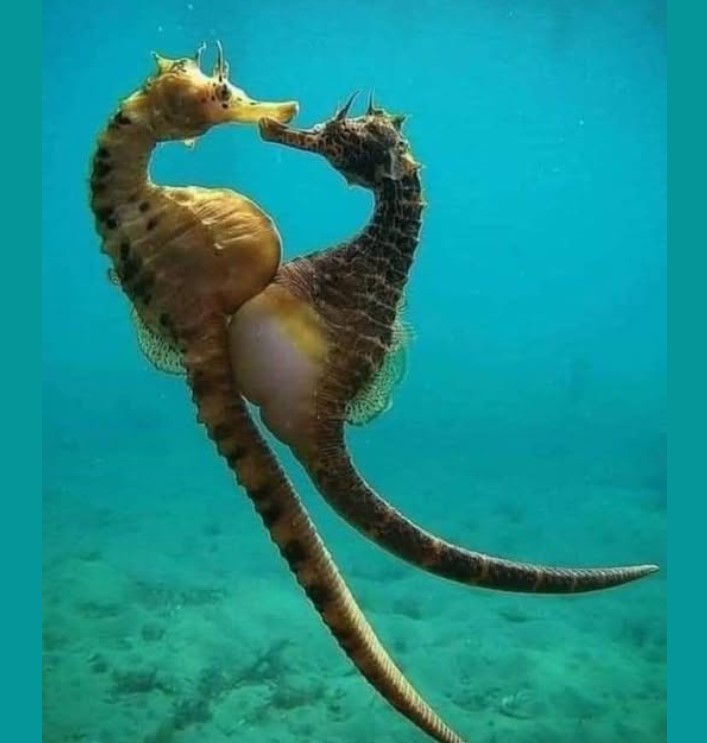exact moment when a female seahorse transfers her eggs to the male
Seahorses are monogamous and among the animals that show love for their partner in the most tender ways. At sunrise, they are so happy to see each other that they dance for over five minutes. With their tails intertwined, they greet each other with a “good morning,” changing their colors to more vibrant shades.
Throughout the day, they swim side by side, exchange affectionate gestures, blush, and make up after quarrels. They love enjoying life and good food: they can eat more than three thousand shrimp a day. They are the only species in which the male gives birth after incubating the eggs that the female lays in his pouch.
During mating, a female deposits eggs into the male’s pouch. The male fertilizes the eggs internally and carries them in the pouch until they hatch, releasing the fully formed offspring into the sea.
A gene present in other fish that plays a role in egg hatching underwent duplication in the seahorse and assumed a new role, helping the advent of the male pouch.
A gene involved in development of pelvic fins in other fish and legs in humans was absent in seahorses, and they lack these fins. Instead, seahorses swim by using a small fin on their back that beats rapidly, with tiny pectoral fins placed near the back of the head used for steering.
